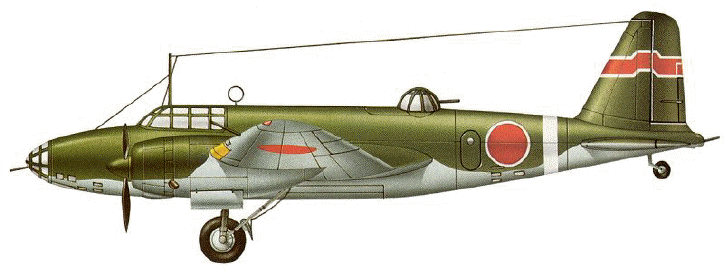 |
|
|||
|
|
|
 |
|
Mitsubishi Ki-21 "Sally" Most important Japanese army bomber, in production up to 1944. Codenamed Sally. Served in every theatre where the Japanese army was engaged. Already obsolete at the time of the Pearl Harbor attack, the Ki-21 Type 97 heavy bomber (Allied code name 'Sally') remained the backbone of the Japanese Army Air Force's bomber squadrons throughout the war. The 'Sally' entered service in 1937 and was used against Soviet forces in Manchuria in 1939 and against the Chinese in the lengthy Japanese warfare in China. The 'Sally' flew against U.S. forces in the South Pacific, but by the end of the war the plane was employed primarily as a transport. On May 24, 1945, seven Sallies flew from Japan to land at an American-held airfield on Okinawa; five were shot down, but the two survivors crash-landed at Yontan airfield, and the twelve commandos from the planes destroyed seven U.S. aircraft, fuel drums, and an ammunition dump before being killed by defending U.S. Marines. At the war's end the 'Sally' joined other Japanese aircraft that were painted white with green crosses to carry VIPs negotiating the Japanese surrender. The 'Sally' thus had the distinction of being in Japanese Army service longer than any other combat aircraft. A Mitsubishi design, the 'Sally' was developed as a heavy bomber to strike targets in the Soviet Far East. The prototype flew in 1937. The design was accepted, but it was reengineer and was continually refined (by Nakajima as well as Mitsubishi) to increase the bomb load and defensive armament. The improved Ki-21-II was the definitive variant, with the IIb sub-series introducing a dorsal gun turret (in place of the "greenhouse"; see below). A further improvement (Ki-21-III) was rejecting in favour of the Ki-67 'Peggy'. Production of the 'Sally' continued until Sept. 1944 with 2,064 aircraft being produced. The 'Sally' was a twin engine, mid-wing aircraft distinguished by an elongated doral "greenhouse" aft of the cockpit, a glazed nose, and tall tail fin. The undercarriage fully retracted into the radial engine nacelles. Up to 2,200 pounds of bombs could be carried in the internal bomb bay. The IIb variant had a defensive armament of one 12.7 mm machine gun in the dorsal turret, four 7.7 mm hand-held machine guns in the nose and other positions, and a remote-controlled 7.7 mm gun in the tail "stinger" position. Maximum speed for the IIb was 297 mph, while its range was 1,350 miles on combat missions. The aircraft was flown by a crew of seven. |
Mitsubishi Ki-21 'Sally'
| Designation / Design Bureau | Mitsubishi Ki-21 'Sally' |
| Type | Five crew bomber |
| Engine | Two 1,500 hp ( 1119 kW ) Mitsubishi Ha-101 radial pistons |
| Maximum Speed | 302 mph ( 486 km/h ) at 15,485 ft (4720 m) |
| Climb Rate | 13.2 minutes to reach 19,685 ft (6000 m) |
| Ceiling | 32,810 ft (10000 m) |
| Range | 1,680 miles (2700 km) |
| Wingspan | 73 ft, 9¾ in ( 22.50 m ) |
| Length | 52 ft, 57/8 in ( 16.00 m ) |
| Height | 15 ft, 107/8 in ( 4.85 m ) |
| Wing Area | 749.2 sq ft ( 69.50 m2 ) |
| Empty Weight | 13,382 lb (6070 kg) |
| Maximum Take-off Weight | 23,391 lb (10610 kg) |
| Armament ( Defensive ) | Five 7.7 mm (0.303 in) Type 89
machine-guns
(in nose, ventral, tail, and port and starboard beam positions) and one 12.7 mm (0.50 in) Type 1 machine-gun in dorsal turret |
| Weapons | 2,205 lb (1000 kg) of bombs |
-
Total production: 2,055
